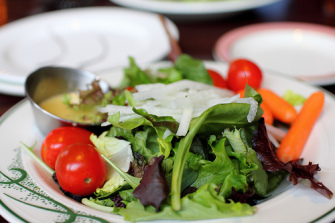Hello everyone, My inspiration for this month’s B-Fit entry is the 2012 theme for Nutrition month. The Dietitians of Canada nutrition month theme for 2012 is interesting, challenging and important...
All posts by Tanya Lewis
In case the word epicurean is new to you, I will try my best to sum up the system philosophy of Epicureanism in a few lines. It is believed that...
Increasingly, patients and family members are insisting on the inclusion of ethnic food varieties in healthcare menus. In the countless discussions I have had with family members and patients around...
How important is dishware in the food service industry? Crucial. In food services, high quality meals must be delivered to customers and patients alike by the right employees, at the...
Hello Everyone! With the Christmas holiday season (and party) fast approaching, I felt it fitting to discuss the topic of holiday eating. To preface our discussion, I would like to...


